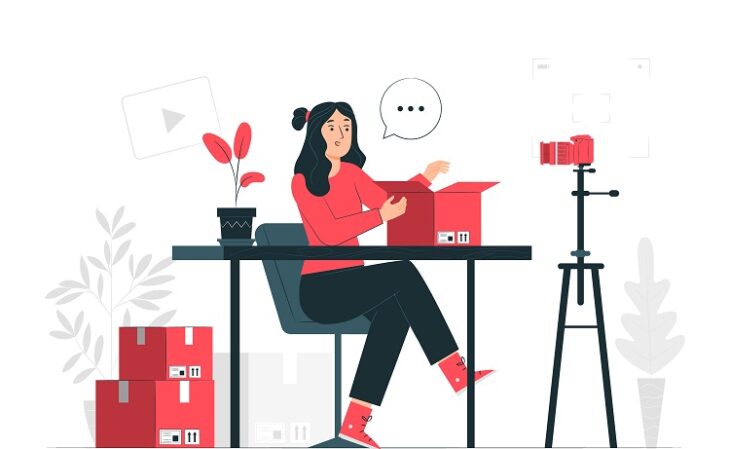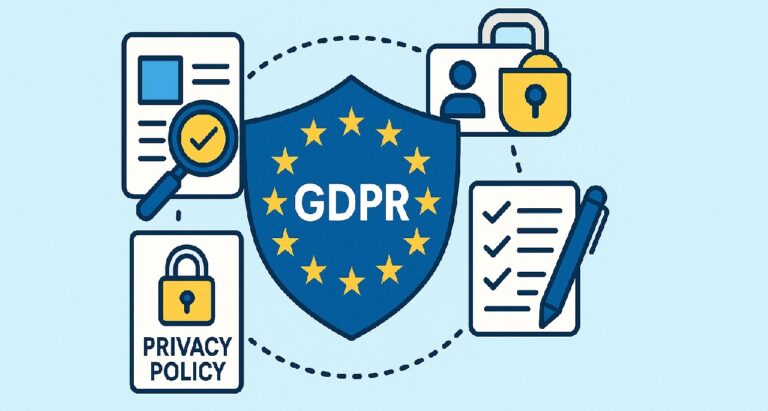It sounds like the dream for many: working from home, collaborating with your favorite brands, and perhaps even being paid to travel. The life of a popular Instagram influencer is one that seems particularly appealing when you’re trapped in a 9-to-5 career. But how easy is it to drop everything and get into the Instagram influence business?
Table of Contents
ToggleHow To Become An Instagram Influencer in 15 Steps
This article is for people who want to know how to become an Instagram influencer, get paid for brand collaborations, and take up Instagramming as a full-time job.
Step 1: Choose Your Niche
To appeal to an interested audience on Instagram, you need to have a niche. It’s no good thinking you can post about everything and anything on this social media platform – the chances of your audience also being interested in piano playing, cartoon drawing, windsurfing, and 80s fashion are pretty slim.
Your Instagram niche shouldn’t be too broad, or you’ll struggle to find an audience that cares about what you have to say. On the other hand, your niche shouldn’t be too focused, either.
For instance, it’s better to focus on fashion as a whole rather than dedicating your account to sandals, as you might find you run out of things to post pretty fast – and you’ll limit yourself when it comes to brand collaborations.
If you’re looking for inspiration, some of the most popular – and profitable – niches for Instagram influencers include the following:
- Beauty
- Fashion
- Baking
- Travel
- Lifestyle
- Health and Fitness
- Business
- Music
- Parenting
- Pets
Don’t just choose a niche because it sounds like you could make a lot of money from it. If you do become a successful influencer, you’ll dedicate your working day to your niche, so it needs to be something you’re passionate about.
If you’re struggling to think of your passions, ask yourself what you do in your spare time, or what you enjoy spending money on. Whether it’s travel or video games, eating out, or shopping for clothes, these are all niches you can make money from.
Once you’ve picked your niche, you’re one step closer to developing your own personal brand.
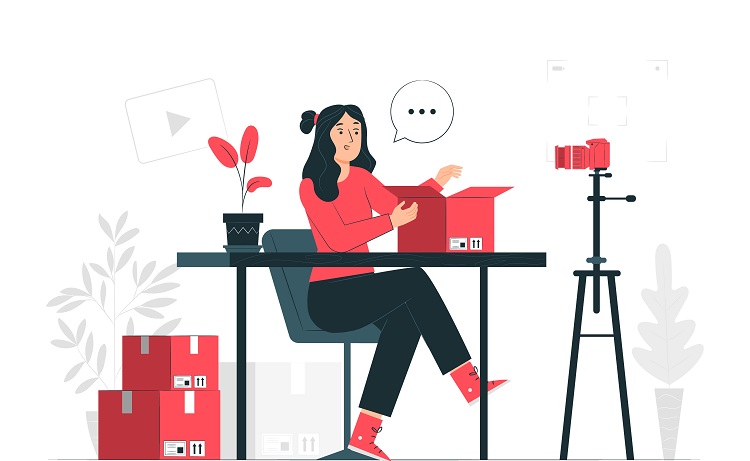
Step 2: Think Of A Catchy Name
Your Instagram username, or your handle, as it’s otherwise known, is something that will stick with you throughout your career as an Instagram influencer. It’s what your followers will know you by, and will give both your audience and approaching brands the first impression of who you are and what you’re all about.
There are several tips for choosing a catchy Instagram username:
Give It Thought
Don’t just choose the first name that pops into your head. You may end up disliking your username a few months down the line, or realizing that it doesn’t fit your brand after all.
You may even decide to change your name, which can be harmful when you’re a developing brand. When you change your name, your followers might not even know who they’re following, especially if you don’t often post pictures of your face on your account.
It’s worth taking the time to think of a name that aligns with how you want to present yourself on Instagram, and your goals as an influencer.
Keep It Simple
Famous parenting Influencer Louise Pentland is known as “Sprinkle of Glitter” on Instagram on her blog, but before that, her blog was called “Beads, buttons and a Sprinkle of Glitter”. It’s easy to see which of these names is more memorable – and it’s simply because it’s less wordy.
If you’re going to combine words in your username, make sure that these words still read well when they’re merged into one (and that they don’t turn into something rude or awkward, which can happen).
Unique, But Not Obscure
Like your niche, your username should be uniquely yours, but it shouldn’t be too obscure. You want people to have an idea of what you post about just from reading your name.
It’s fairly easy to do this. If you’re a vegan baker called Jessica, for instance, “Jessicasveganbakes” is simple, to the point, and clearly outlines what a potential follower can expect to see. If you want to share travel posts on your Instagram account, include the word “travels”, “adventures”, “wanderlust”, “traveler”, “backpacking” or something else related to travel on your username.
You may notice that some influencers simply use their names as their usernames. This can work well with certain niches, like lifestyle – but be cautious.
Many of these influencers have simply become so well-known that they’ve been able to turn their name into a brand. If you’re a new influencer, branding with your name from the very start will be more difficult.
Step 3: Have a Creator or Business Profile

Instagram gives you two options for creating an account, depending on how you plan to use it: personal and business accounts.
If you use Instagram for everyday general posting, you most likely have a personal Instagram account. Personal accounts are pretty simplistic and are designed for people who just want to share pictures with their friends.
An Instagram business account, on the other hand, is intended for use by businesses and creators (that’s you). You get all the same features and functions of a personal account, but with a bonus: you can view Instagram insights on your posts, Instagram stories, Instagram reels, follower demographics, and more.
The analytical tools offered on an Instagram business account can give you the insight you need to better understand your audience – and, importantly, what they like to see from you.
You’ll be able to see which posts perform the best, which will enable you to tailor your content to your audience’s preferences. This should help you to drive even more engagement, which will hopefully get you onto the Instagram Explore page and attract new followers. The more interested, engaged followers you have on Instagram, the better.
It’s free to set up a business account on Instagram. Just set up a personal account, then follow these steps:
- In the top right-hand corner of your account, click the button with the three horizontal lines.
- Tap “settings”, then “account”.
- Here, you should see the option to switch to a business or professional account. Tap this option, then “continue”.
- Choose your category (this can be your niche, or as close to it as possible). Tap “done”, then confirm by tapping “Ok”.
- Add your contact details – it’s best to use your own dedicated email address for your social media influencer role, as the address will be made public to your followers. It’s also wise to avoid using a phone number altogether for the same reason.
Step 4: Use a Nice Personal Profile Photo
A nice personal profile photo can, alongside a catchy, relevant username, create the right first impression when your followers click on your account.
No matter what niche you’re posting about, it’s best to use a profile photo of yourself. This allows your audience to connect your face to your brand, which will let you build a personal connection with your audience, and showcase your authenticity and approachability – two important traits for an influencer to have.
Your Instagram profile picture is a representation of your Instagram account, so you want it to be as professional as it is friendly and relatable. A high-quality selfie or a picture related to your niche – such as yourself wearing an apron or a travel photo – is a good choice.
Remember, brands will also look at your profile picture when visiting your page for potential business activities, so your picture should be appropriate in a professional sense, too.
Step 5: Write an interesting Bio
Instagram bios don’t give you a lot of space to write about yourself – only 150, to be exact – so it’s important to make every word count.
When users click on your account, your Instagram bio supplies them with more information beyond what they can gather from your username and profile picture.
You’re free to write whatever you want in your bio, but again, think about how you want to come across, both to brands and potential followers. You can use your bio to elaborate more on your niche and tell your audience what to expect from your posts.
Use your own brand’s voice to write your bio, and don’t be afraid to add a touch of humor. Your audience should see you as a person that they can relate to, and you can achieve this with a friendly bio.
Again, professionalism is important. Write your bio into a spell-checker before you post it online if spelling and grammar aren’t your strong points. You could also ask a friend or a workmate to review your bio and offer improvements.
Step 6: Get the best of Hashtags

One of the easiest ways to get noticed on Instagram is to use relevant hashtags. This wouldn’t be a good “how to become an Instagram influencer” guide without discussing hashtag use. You can add hashtags to your posts, your stories, and your bio.
When Instagram users are looking for inspiration, they’ll search for a particular hashtag. For instance, an Instagram user might search for #christmasbaking as the holiday season approaches, or #ootd if they’re searching for fashion inspo.
When you use a certain hashtag, your image will show up on the Instagram feed for that hashtag. If your image appeals to the people scrolling through this hashtag feed, they may click on your profile. They will then hopefully discover that all your content appeals to them, then they’ll give you a follow.
It’s easy to see how you can get popular on Instagram just through hashtag use. Let’s say that 500 users find your image on a hashtag feed, and of those 500, 100 users click on your profile and follow you. You’ve just made 100 followers from posting a single image.
Of course, your images need to be high-quality and well-thought-out, or it’s unlikely that anyone will even care about them, let alone click through onto your profile.
How Many Hashtags Should You Use?
It’s one of the biggest questions asked by Instagram influencers: is there a sweet spot for hashtags? The answer is: that it’s complicated.
Instagram lets you use up to 30 hashtags in a single post and up to 10 hashtags in a single Instastory. If you try to use any more hashtags than this, your whole Instagram caption or comment simply won’t post.
There’s a lot of debate over how many hashtags Instagram prefers you to use, but no one really knows the answer. Unfortunately for influencers, there’s no manual for the Instagram algorithm, and it seems to change all the time.
You can only go off other people’s anecdotes and your own trial and error. Some people say that making the most of all 30 hashtags in a post is best, as it gives you the biggest potential to be seen by new followers. Others say that using all 30 hashtags may be seen as unnatural, spammy, or ‘bot-like’ activity on Instagram, which could land you with a shadowban (more on this later).
Step 7: Find Apps That Can Help You Get Brand Collaborations
Once you’ve reached the stage where your profile is filled out, you’ve been posting consistently for at least a few months, and you have a few thousand followers, it’s time to start looking for brand deals.
In an ideal world, you’d be able to simply sit back and let the collaboration requests fall into your email inbox. Unfortunately, this is a benefit that only the most popular, successful influencers can enjoy.
As a micro-influencer, you’ll have to do a lot of the work looking for brand collaborations yourself. The most convenient solution is to look for an Instagram influencer marketing platform, which can connect you with interesting brands for collaborations.
There are a number of websites and apps available today that help brands find social media influencers that might want to work with them and vice versa.
Look for apps that connect influencers with brands in your specific niche. Some influencer marketing apps let brands post collaboration offers, and influencers can respond directly with their proposals. Others may allow brands to reach out to influencers directly.
In this case, a brand can write a direct message to you and suggest a collaboration. You can consider the offer, check the requirements, and either accept or reject it.
Here are some examples of apps for establishing brand collaborations:
- Intellifluence
- Collabor8
- IZEA
- SocialBook
- Kofluence
- TribeFluence
It’s also worth looking for an influencer marketing app that offers safe payment options. A secure app will ensure that the money from the brand is paid at the very start of the project, then held in escrow until the influencer completes the project as requested.
Step 8: Make Co-promotions With Other Influencers
The influencer world can often feel quite cutthroat. After all, influencers are often competing against one another for collaborations and even content. There’s a big focus on who can take the best photo in a particularly popular travel destination, wearing a particular fashion piece, or working with a particular brand.
Thankfully, many influencers take a different attitude to this, and won’t show hostility if they discover other influencers in their niche. In fact, many influencers work together on promotional content, and this helps to boost the popularity of both involved.
Let’s imagine that you have 10,000 followers for your Instagram travel account. You come across an account that looks very similar to yours and also has 10,000 followers. You notice that only 1,000 of their followers also follow you.
If you collaborate with this influencer and promote each other’s content, you have a good chance of seeing your follower count increase.
Your fellow influencer’s audience trusts what they have to say, so if they recommend you, their followers are likely to check you out. It stands to reason that these followers will enjoy your content if they also enjoy your fellow influencers.
Like every type of promotional content on Instagram, you should avoid being spammy when working with other influencers. You may simply want to share one another’s profiles on your stories, or even meet up in person to shoot photos or videos together.
You could then share this content to your profiles, tagging each other, and attracting your audiences to each other’s accounts.
Step 9: Create a Lot of Fresh Content
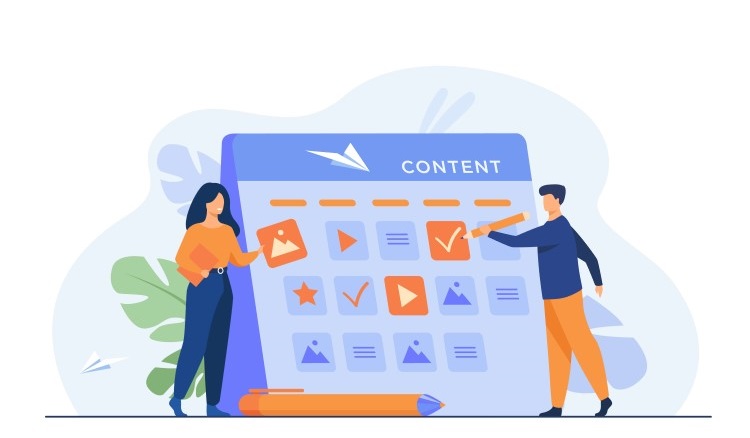
Starting an influencer account may feel easy if you have a backlog of content to post. But what happens when you’ve posted it all?
Most influencers use some sort of posting schedule to ensure consistency with shooting and posting content. It becomes surprisingly challenging to think up new, unique content after several months of posting.
Looking at content posted by other influencers will help, but you want to avoid copying where you can.
Wherever you’re heading on a daily basis, you should be ready to create content. You never know when a photo opportunity might arise.
Some influencer niches are particularly hard to produce consistent content for. If you’re a travel influencer, for instance, you probably aren’t traveling regularly enough to have a constant log of images (as much as you wish you were!).
Being inventive can help, here; perhaps you could visit local landmarks while you’re not able to travel overseas. Your hometown might seem boring to you, but to your followers, it’s probably not.
Other ideas for content include:
- Seasonal content, such as themed holiday content
- Flatlays
- Introductions (or reintroductions!) of yourself to new followers
- Throwback photos
- Birthday or special occasion celebration posts
You can take ideas for content from other influencers, but remember not to directly copy – it’ll be obvious.
Step 10: Be vulnerable and transparent
In many ways, when you’re an influencer, you become a brand. But that doesn’t mean that you should behave like most brands – withdrawn, professional, and impersonal.
What gives influencers an edge is that they’re real, relatable, vulnerable people. People won’t usually buy a dress you wore because you look good in it. They’ll buy it because you like it, and they trust your opinion.
Many new influencers make the mistake of hyping up everything, even products they don’t like because they’re so keen on brand collaborations. This is why you often see micro-influencers promoting diet coffees and CBD gummies.
Unless you truly care about coffee or CBD products, it just won’t come across as genuine to your audience.
Transparency involves sharing what you don’t like, as well as what you like. You want your followers to relate to you, and that means showing that you have real opinions and emotions.
Of course, Instagram is a highlight reel, and many people choose to follow influencers because they provide some form of escapism. But that doesn’t mean you can’t be honest.
If you follow some of the biggest influencers, you’ll notice that they’ll occasionally take to their Instagram stories when they’re feeling frustrated or upset. By doing this, they encourage their followers to empathize with them, encouraging future engagement.
This doesn’t mean you should air your personal problems online unless you’re 100% comfortable doing so. As an influencer, you’re still entitled to some degree of privacy. But don’t be afraid to show your followers that you’re human.
Being Real To Instagram
Being a real, relatable person is important not only for your followers but also for Instagram itself.
Like many parts of the internet, Instagram is a popular hangout for bots. Bots are used by some brands and influencers to auto-post on their behalf. The benefit of this is that it frees up a lot of your time, as the bot will like pictures and post comments on your behalf.
However, the big setback of bots is that they’re usually programmed to carry out activity all at once – so, for instance, a bot might like 100 pictures and post 20 comments within a matter of seconds. This gets flagged up on Instagram, and an account can be penalized for bot activity. In a worst-case scenario, Instagram may even decide to suspend any account that uses bots.
Instagram, being a bot itself, sometimes doesn’t know the difference between bot activity and persistent or spammy activity from a real human. This means that, if you like one too many pictures at once or leave one too many comments, Instagram may flag your account in the same way that it would for real bot activity.
As a result, your account could be penalized. In the influencer community, this is known as a shadowban.
Shadow Bans: What to Know
Shadow bans are yet another confusing aspect of the Instagram algorithm. Nobody actually knows whether shadowbans are a real thing, and there has been no confirmation from Instagram that they exist.
However, on online influencer groups and forums, many people have mentioned being blocked from being able to like or comment on images, or posting their own image and noticing that it hasn’t shown up on hashtag feeds.
This always seems to happen after the user has liked or commented on images in a way that may be deemed excessive or bot-like by Instagram.
Whether you believe that shadowbans are a real thing or not, you want to avoid getting penalized by Instagram for behaving like a bot. The last thing you want is an Instagram ban after you’ve been working on it for months, after all.
This is why authenticity is so important. While it’s fine to like a few photos under popular hashtags, the best way to get attention is through your posts themselves. Here’s where people will get a chance to learn about the real you, which you could never achieve with a like or a comment.
Step 11: Tell stories that Inspire Others
One of the biggest reasons why Instagram is so popular today is its inspirational value.
Even people who don’t actively post photos on their own Instagram accounts may still visit the app just to get inspired, in the same way, that many people use Pinterest.
If you can create inspiring content that evokes a feeling in your audience – whether that’s wanderlust, creativity, or simply wishful thinking – you’ve got the recipe for Instagram success.
You’ve probably saved a few pictures on Instagram yourself, whether you’ve been on the hunt for new recipes to try out, countries to add to your travel bucket list, clothes to buy on your next payday, or simply images that make you feel calm or happy.
Think about the sorts of pictures that might inspire followers in your niche. For instance, if you’re a travel influencer, images with a fantasy element tend to do particularly well, as they’re more ‘daydream-worthy’ and evoke wanderlust.
If you’re in the food niche, you’re more likely to inspire your audience with a beautifully-presented dish that looks too delicious to resist. #foodporn posts, such as loaded burgers and drool-worthy chocolate cakes, tend to do especially well in this niche.
When users save your post, it’s a green flag for Instagram. It means that, as a content creator, you’re offering value to your followers with your posts, and people like what they see.
Although there’s no actual proof of this, many influencers theorize that Instagram is more likely to showcase your future posts on other users’ explore feeds if your previous posts are getting lots of saves.
After all, saves are a lot harder to get than Instagram likes – you probably won’t get more than 10 saves per post when you’re starting out.
Step 12: Prepare your Media Kit and Decide your Rate
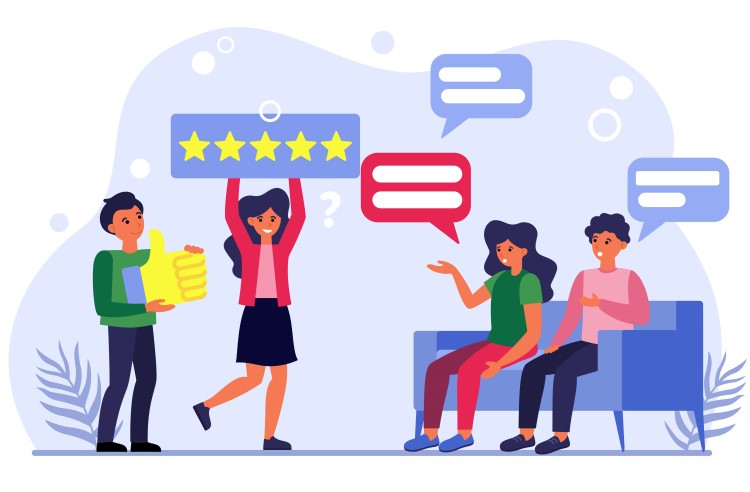
Once you’ve perfected your content and streamlined your processes, it’s time to prepare to reach out to brands (or have brands reach out to you!).
When a brand approaches you, or when you approach a brand, you want to give off the best impression possible. Simply typing out your rates onto an email or – even worse – an Instagram DM doesn’t look professional. This is where media kits come in.
A media kit is a downloadable PDF document that tells brands more about you. Your media kit will include stats like your follower count and average engagement on posts and stories. It will also feature your rates per hour, per post, or per project, depending on what is most suitable for your niche.
Most influencers will offer rates on a per-post basis, along with a discounted package for several posts and a series of Instastories. The idea is that the brand will choose to pay more for the discounted package, as they’re getting the better deal.
You can look online for example media kits for influencers if you’re unsure how yours should look. You don’t need to be a design expert to make these kits – most influencers will make their kits themselves on a tool like Canva, which can produce professional results.
What Should You Charge?
As for any freelancer role, it can be incredibly difficult to figure out what you should be charging as an influencer, and when you should even begin to charge for sponsored content.
Again, there’s no manual that tells you how much to charge on Instagram, which makes it all the more difficult. If all influencers followed the same guidelines, it wouldn’t be so hard to decide on your own rates.
The unofficial industry standard on pricing is $100 per 10,000 followers. So, this technically means you can start charging per post once you hit your first 1,000 followers – but let’s face it, $10 for a post probably isn’t worth your time negotiating the collaboration.
Most influencers agree that you should only start charging when you hit 10,000 followers, though some may charge when they hit 5,000. If your engagement is good, and you notice that you get as many genuine likes and comments as influencers with double your following, you may choose to start charging earlier for your sponsored posts.
The importance of good engagement can’t go understated. The worse your engagement, the more likely a brand is to think that you’ve bought fake followers.
Just because you don’t charge for posts while your account is small, it doesn’t mean you won’t receive free products in exchange for collaboration. It goes without saying that you should never pay for a product in a brand collaboration – this is simply a sneaky way for the brand to get you to buy from them.
Step 13: Leverage Your Profile
Once you’ve hit a certain level of popularity on Instagram, it’s time to focus on ways to leverage your account.
One method is to use Instagram’s paid advertising feature. Let’s look in more detail at how this works below.
Instagram Paid Promotions
Instagram’s paid promotions feature lets you pay to promote your posts and reach an audience beyond your followers.
You can select your preferred target audience – either users in a specific region, users similar to your own followers, or a manual selection of people, places, and more – and Instagram will provide you with an estimated reach for your image.
It’s worth choosing your best image to promote online. Paid promotions aren’t free, and you want to get enough value back (in this case, lots of new followers) to make it worth it. If you pay to promote an image that isn’t particularly special in any way, you’re unlikely to attract the attention you’re hoping for.
When selecting an image for paid promotion, you should also make sure:
- The context makes sense to the majority of your intended audience (and isn’t an in-joke that only your loyal followers would understand, for instance)
- You give your audience a reason to stop scrolling. Whether you begin the caption with an intriguing question, post something ‘controversial’ (but don’t overstep the mark, here), or use video to draw eyes to your post, you want your audience to linger on your post long enough to want to learn more.
- Your feed is up to scratch, and similar to the promoted image. You don’t want to funnel an interested audience over to your account, only for them to take one look at your image feed and click away, feeling disappointed. It’s worth perfecting your feed before you pay to promote an Instagram post so that you can make the best first impression to potential new followers – making your investment worthwhile.
Will Paid Promotions Hurt Your Engagement?
You may have heard a rumor that paying to promote your Instagram posts will actually hurt your engagement going forward.
Some influencers believe that once Instagram knows you’re willing to pay to get seen by new followers, it will restrict who can see your future posts, prompting you to pay to promote your next post and you’re next… which could become expensive, and fast.
What’s in it for Instagram? Money – for every post you promote, a bit more cash goes into Instagram’s pocket. But as with a lot of rumors relating to the Instagram algorithm, there’s no evidence to suggest that Instagram deliberately restricts users’ posts to make them pay to promote them.
Considering that Instagram is already a multi-billion dollar company, it doesn’t exactly need the extra dollar or two from frustrated influencers wondering why their posts aren’t being seen.
This doesn’t mean that paid promotion is necessarily right for you, however. If you’re a new influencer and you’re not actually earning from influencers, you probably don’t want to be putting money into it just yet. In this case, there are several alternative ways to leverage your account for free.
Step 14: Host Competitions
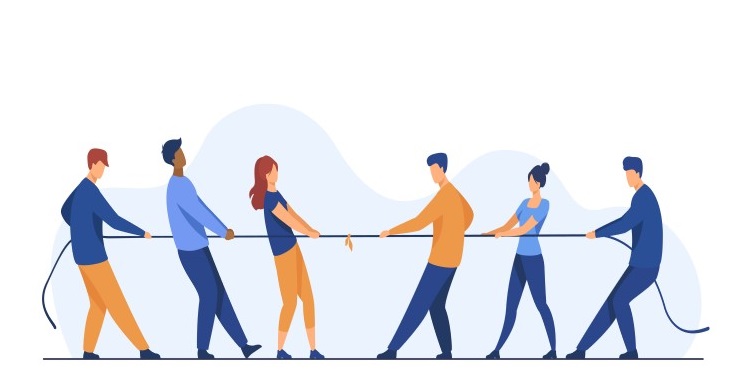
Everyone loves an Instagram competition. There’s nothing to lose – you just tag a couple of friends, like a post, and maybe share it on your Instastories, and you’re in with a chance of winning a cool prize.
It’s easy to see why competitions are so enticing from an influencer’s perspective, too. When you announce that you’re giving away a prize, you should attract the attention of hundreds, maybe even thousands, of new followers.
There are plenty of ideas for giveaway products, depending on the niche you’re in. These include:
- Food hampers
- Jewelry
- Seasonal items (Halloween, holiday, etc.)
- Discount vouchers
- Tech
- Makeup/ skincare/ self-care packages
- Homeware/ kitchen appliances
Remember, you’ll need to pay to post the product, so you may want to limit your giveaway to a national audience and choose items that are relatively lightweight and won’t cost a bomb to deliver.
The general rule is that the price has to be worth it from a monetary perspective. You probably won’t attract a lot of attention if you give away a single item of clothing (unless it’s designer!) or a $10 off travel voucher.
If you’re unsure, start with a product that’s at least $20 in value. You don’t necessarily have to pay for this, either – you might have unwanted gifts, a stash of high-quality pre-loved clothing, a pantry full of sweet treats, or even a handmade item that you know your followers would love to win in a giveaway.
When you have enough followers to work on brand collaborations, you may be able to collaborate with a brand in a competition. This could be a fantastic opportunity to “steal” some of the brand’s followers, especially as many brands have hundreds of thousands of followers already.
Just make sure that you pair up with a brand in your niche, as you need your audiences to align. You don’t want to bring in 500 new followers that couldn’t care less about your content.
There are a few rules to stick by with Instagram giveaways:
- You have to actually give the product away. Doing a fake giveaway could end up being potentially harmful if you’re caught. Besides, it’s morally wrong. If you want your followers to trust and respect you, you’ll need to commit to the giveaway from start to finish – and that means not faking it.
- Keep your followers in the loop. Perhaps many people who enter your giveaway will simply enter and forget – but some will be waiting for updates. Post a countdown on your Instastories. Even better, make your winner’s announcement in your stories. Then close the competition (writing “COMPETITION CLOSED” at the top of the post is fine), so that anyone who missed your announcement knows that you’ve picked a winner.
- Don’t ask your followers to do too much. It’s best to stick to three requests: liking the past, tagging two friends, and following your account. You can also add the option for your followers to share the competition on their stories for an extra entry. If you make Instagram story sharing mandatory, however, you may lose a lot of entrants, as many people are picky about what they post on their stories. The same goes for tagging more than three friends or even saving the image – some people may back out if they think they’ve got to put in too much work.
Commit To Instagram Stories
The growth potential of using Instagram stories is something that is undervalued by many budding influencers.
You might think that the importance lies in your ‘actual’ content: the posts that linger permanently on your feed. While this is true in a sense, your posts are more important for giving off the first impression, while your stories will help to strengthen your relationship with your followers.
Let’s say somebody follows you because they think you post pretty pictures. They don’t actually care about you, the person behind the account. This is where posting your stories, especially video vlog-like content, can be really helpful.
Many famous Instagram influencers use their Instastories as a sort of personal diary. They’ll share between 5 and 10 minutes of video content per day, telling their followers what they’ve been up to and how they’re feeling. When done right, their followers can feel like they’re catching up with a friend.
It’s easy to understand why this form of posting is so effective for building a loyal audience as an influencer. You’re giving your followers an extra reason to check in with you – not just to see your content but to listen to what you have to say today.
You’ll also get the attention of people who may have followed you but not really kept an eye on your account. If they’re interested in your Instastories, they may click through to your account and have a long scroll. This works in your favor, as Instagram will note that this follower is particularly interested in your account, and your content will be prioritized on their scroll feed.
You don’t have to have much confidence to post images on Instagram. Speaking straight into your camera, on the other hand, can be challenging.
Vlogging on your Instastories is something that will take some time to get used to. At first, you might feel awkward, mix up your words, or simply feel that you have nothing to say. But, as with many of the most challenging things in life, you can improve your confidence with practice.
It’s worth persevering with vlogging on your Instastories until you’re so comfortable that it feels like second nature to you. Vlog-style story uploads can do wonders when it comes to increasing your likeability and relatability – which, as you know, are two of the most important qualities of an influencer.
Step 15: Have Patience
It’s rare to hear of an Instagram influencer who almost fell into their job by accident, especially nowadays, when more and more people are attempting to become influencers in already-oversaturated niches.
It’s important to know that becoming a mega influencer on Instagram, Twitter, Facebook, YouTube or any other influencer platform isn’t something that happens overnight. And it’s not all fun, either.
It might be enjoyable to plan content and post images, to begin with, but there will come a time when the hobby becomes more like a burden. You’ll need to keep up with the content on a daily basis, even when you’re on vacation (in fact, if you’re a travel influencer, you may need to be even more active during your trips away).
You need motivation, drive, and dedication to make it as an Instagram influencer. But you also need patience.
You may experience periods of frustration, wondering why your quality content isn’t attracting more followers, why brand deals are few and far between, and why nobody seems to care about what you’re posting. You may compare your account to other accounts in your niche, which will only make you feel worse.
Whenever you feel like this, try to remind yourself that your journey to success is a slow and steady one. As your account continues to grow, focus your energy on learning more about your craft, whether by investing in better photography gear and following tutorials on how to use it or reading up on how to better market yourself.
Once your account is as professional and appealing to your audience as it can be, the opportunities will present themselves… eventually.
Perhaps one of your images will get picked up and shared by a famous account, or you will briefly make it onto the explore feed and bring in a few hundred followers at once. All these little milestones add up, and within a few months to a few years, you’ll be popular enough to start accepting brand deals.
You can probably now understand the importance of being passionate about what you do. Without passion, you’ll have nothing to drive you through the months of daily commitment before you receive any sort of financial payback for your hard work. Of course, quitting gets you nowhere, so when the going gets tough, keep going.
You might be interested to check those related posts as well:
- Best Ways to Make Money on Instagram [for Influencers] in 2024
- Social Media Influencer Guide 2024 [Learn Digital Marketing]
- Effective Influencer Marketing Strategies Guide 2024
Conclusion
It’s worth taking stock of just how much hard work goes into being an influencer before you decide to create your own influencer profile on Instagram. Leading the influencer lifestyle can be incredibly rewarding, but there’s more to it than free stuff and fancy events.
If you’re prepared for the hard work, what are you waiting for? Follow the tips in this article to embark on your influencer journey today.
